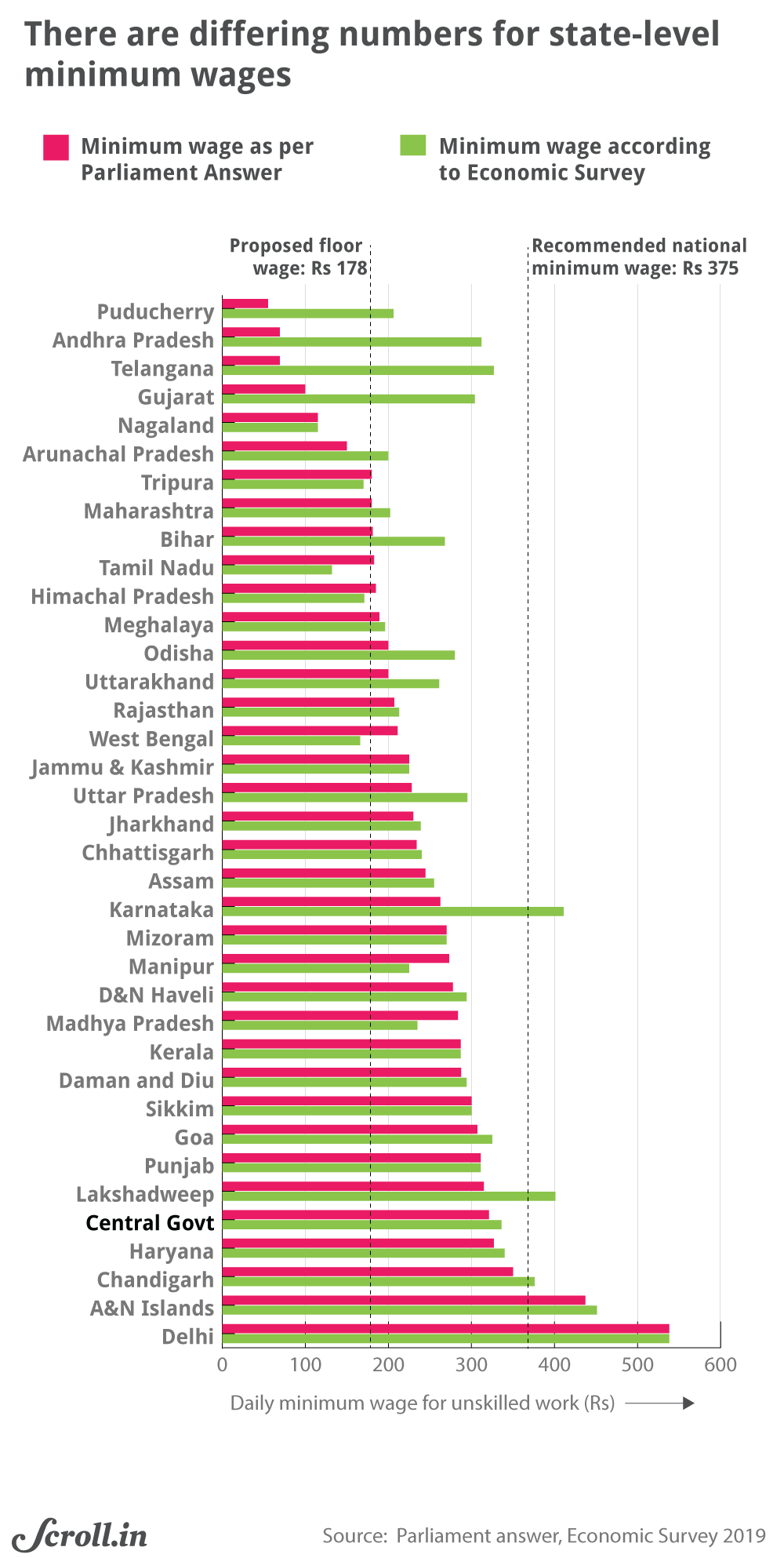Description
Daily Editorial Analysis
Editorial Analysis based on “India should raise minimum wages or adopt a living wage approach” which was published in The Mint.
Introduction:
- The Government of India’s decision to replace the minimum wage in the country with a scientifically calculated living wage by 2025, with expertise from the International Labour Organisation (ILO), is welcome.
Minimum wages:
- It has been defined as the minimum amount of remuneration that an employer is required to pay wage earners for the work performed during a given period, which cannot be reduced by collective agreement or an individual contract.
ILO convention on minimum wages:
- The Minimum Wage Fixing Machinery Convention, 1928 (No. 26), encouraged countries to implement minimum wages where “no arrangements exist for the effective regulation of wages by collective agreement or otherwise and wages are exceptionally low”.
- Later, the Minimum Wage Fixing Convention, 1970 (No. 131) called for coverage of “all groups of wage earners whose terms of employment are such that coverage would be appropriate”. The principle of full consultation with social partners lies at the heart of this Convention.
Need For Reforming minimum wages:
- India's National Floor Level Minimum Wage (NFLMW) of ₹176 ($2.1) per day is one of the lowest in the Asia-Pacific region. It falls far below the minimum wages of neighboring countries like China ($11.9), Vietnam ($6.5), and even Bangladesh ($3.7).
- Brazil's minimum wage of $47 per day is closer to those in developed economies like Australia ($14.8 per hour), the UK ($14.1), and the US ($7.2).
- Despite the stagnant NFLMW, the Indian government regularly adjusts dearness allowance (DA) for central government employees to counter inflation. In March 2024, DA was last raised by 4%, along with associated allowances. There's a pressing need for India to align its minimum wage with the cost of living and inflation.
- Alternatively, it should consider adopting a living wage that covers expenses on food, transport, housing, education, healthcare, etc., as defined by the International Labour Organization (ILO) for a decent standard of living.

|
How is the minimum wage calculated in India?
●India uses a complex method of setting minimum wages that defines nearly 2,000 different types of jobs for unskilled workers and over 400 categories of employment, with a minimum daily wage for each type of job.
The monthly minimum wage calculation includes:
●The variable dearness allowance (VDA) component, which accounts for inflationary trends, that is, the increase or decrease in the Consumer Price Index (CPI), and
●Where applicable, the house rent allowance (HRA).
|
How is the minimum wage regulated?
- The minimum wage has for a long time been regulated under the purview of the Minimum Wages Act, 1948. This will be subject to the provisions of the Code on Wages Act, 2019, notified in August 2019, once it comes into effect across the country.
- Code on Wages Act would replace four labor regulations – Minimum Wages Act, 1948; Payment of Wages Act, 1936; Payment of Bonus Act, 1965; and Equal Remuneration Act, 1976.
- The new wage code, once implemented, would prohibit employers from paying workers less than the stipulated minimum wage.
- Further, minimum wages would need to be revised and reviewed by the central and state governments at an interval of not more than five years.
- India is also aiming over the concept of establishing a ‘living wage’ by 2025, and is currently working with the ILO.
- A living wage would exceed the basic minimum wage as it will cover essential social expenditures, such as housing, food, healthcare, education, and clothing.
Why India has no national minimum wage
- Under the Code on Wages Act, 2019, workers from all industries are entitled to receive minimum wages fixed by their respective state governments.
- Matters concerning labor and its welfare come under the purview of, both, the state and central governments as per constitutional law, thereby resulting in multi-jurisdictional regulation.
Read about the new labour codes in India here:
https://www.iasgyan.in/daily-current-affairs/new-labour-codes-47





